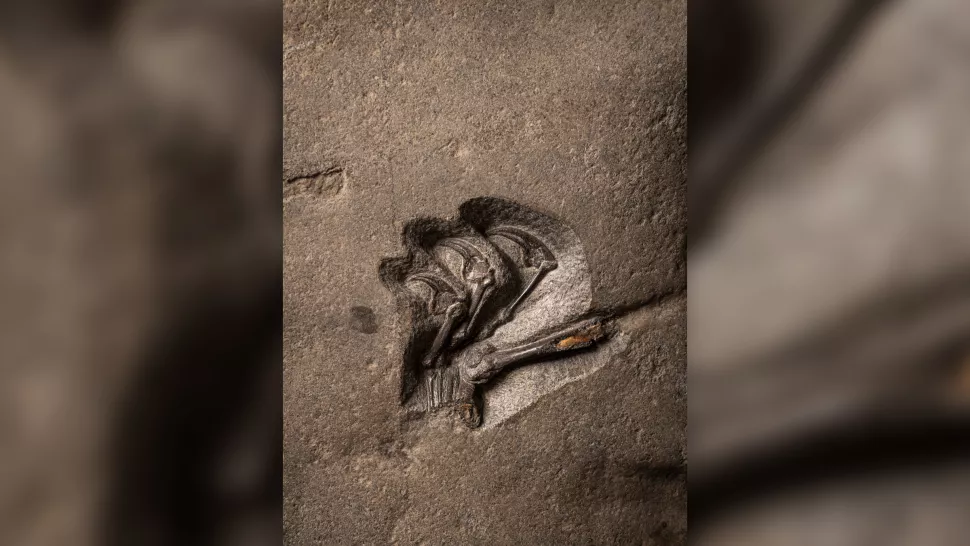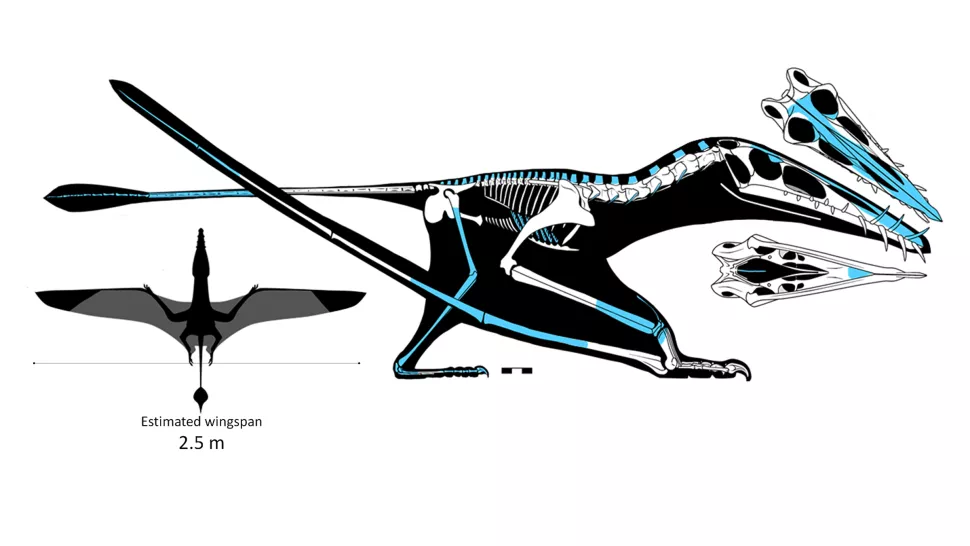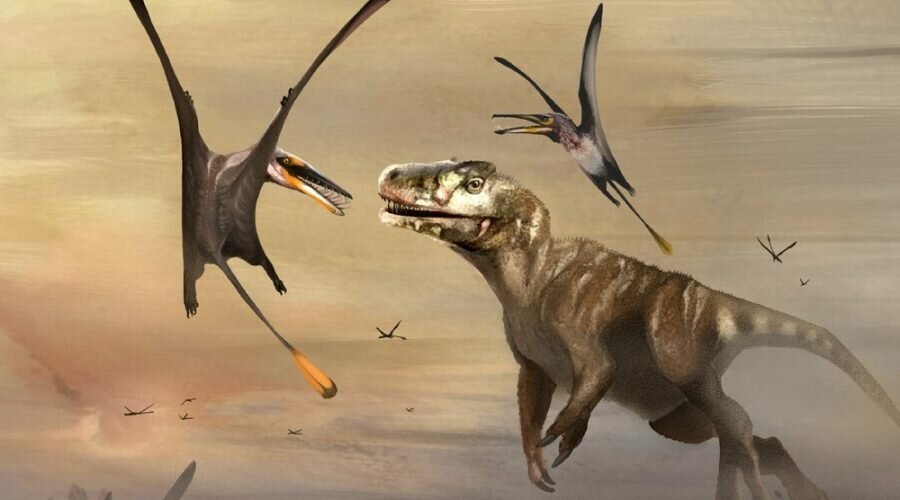It might be best known today for its otters and puffins but 170m years ago the Isle of Skye was home to an enormous flying reptile with a wingspan bigger than a kingsize bed, researchers have revealed.
Fossil hunters in Scotland say they have recovered the remains of the world’s largest Jurassic pterosaur, adding the creature – known informally as a pterodactyl – also boasted a mouthful of sharp teeth for spearing and trapping fish.
Pterosaurs were the first vertebrates to evolve flight and include the largest flying animals in Earth history.
The newly-identified species is the largest Jurassic pterosaur yet known, consistent with the fact that its bones and skull are the longest of any Jurassic specimens.
Named Dearc sgiathanach, the flying reptile likely achieved wingspans over 2.5 m (8.2 feet), and perhaps larger (over 3 m, or 9.8 feet).
“Dearc is the biggest pterosaur we know from the Jurassic period, and that tells us that pterosaurs got larger much earlier than we thought, long before the Cretaceous period, when they were competing with birds — and that’s hugely significant,” study senior researcher Steve Brusatte, a professor and personal chair of paleontology and evolution at the University of Edinburgh, said in a statement.


The spectacularly preserved skeleton of Dearc sgiathanach was discovered by team member Amelia Penny, a Ph.D. student at the University of Edinburgh, in 2017 at Rubha nam Brathairean (Brothers’ Point) on the Isle of Skye, Scotland.
The specimen is the best-preserved skeleton of a pterosaur ever found in Scotland.
“Dearc sgiathanach is a fantastic example of why paleontology will never cease to be astounding,” said Dr. Natalia Jagielska, a paleontologist in the School of GeoSciences at the University of Edinburgh.
“Pterosaurs preserved in such quality are exceedingly rare and are usually reserved to select rock formations in Brazil and China.”
“And yet, an enormous superbly preserved pterosaur emerged from a tidal platform in Scotland.”
CT scans of Dearc sgiathanach’s skull revealed large optic lobes, which indicate that the flying reptile would have had good eyesight.

However, to fly, pterosaurs needed lightweight, delicate bones — a feature that means their remains rarely fossilized well.
“To achieve flight, pterosaurs had hollow bones with thin bone walls, making their remains incredibly fragile and unfit to preserving for millions of years,” study lead researcher Natalia Jagielska, a doctoral candidate of paleontology at the University of Edinburgh, said in the statement. “And yet our skeleton, about 160 million years on since its death, remains in almost pristine condition, articulated [the bones are in anatomical order] and almost complete. Its sharp fish-snatching teeth still retaining a shiny enamel cover as if he were alive mere weeks ago.”
Dr David Unwin, an expert in pterosaurs at the University of Leicester who was not involved in the research, said it was debatable whether the newly discovered creature was the largest of its era, noting some fragmented bones from other fossils have already hinted at similar sized pterosaurs in the middle Jurassic.
Nonetheless he said the find was significant because fossils dating to that time are scarce, while there are very few pterosaur remains that are as complete.
“This new find will allow us to go back to those older collections and understand much better what we’ve got in there,” he said. “It’s a big piece of the puzzle in our evolutionary history of pterosaurs.”
Sources:
https://www.cell.com/current-biology/fulltext/S0960-9822(22)00135-X

